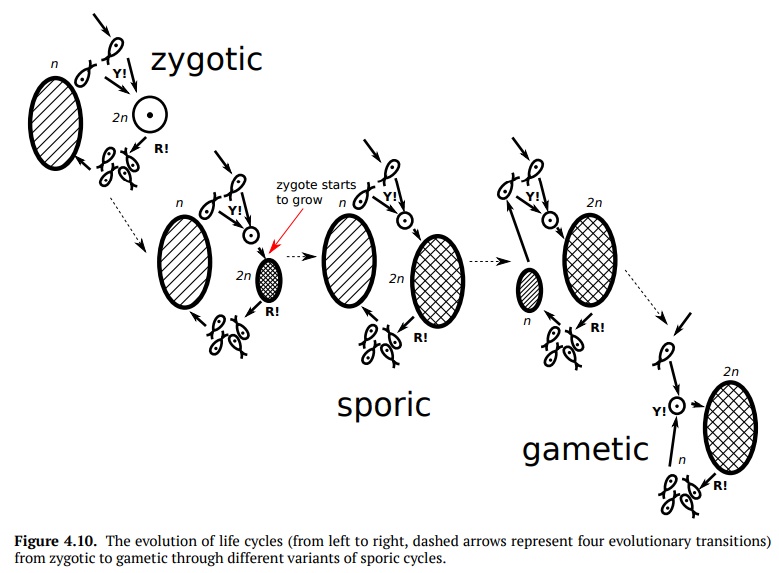Chapter: Introduction to Botany: Multicellularity, the Cell Cycle and the Life Cycle
Evolution of Multicellular Eukaryote Life Cycles

Evolution of Life Cycles
The most striking difference between unicellular and multicellular life cycles is that zygote of multicellular organism may start to make diploid body (diplont) which sometimes is visually almost identical to haplont. This is because in the evolutionary perspective, diplonts are “better” than haplonts. Frequent situa-tion of gene dominance allows only one variant (allele) of the gene to work, that may save organism from lethal mutations. An increased number of genes could help to make more proteins. A third reason is that diplonts’ genomes are more diverse. One gene may be able to withstand one group of conditions, and the other variant may have a different set of possible conditions. Therefore, diplont is able to take advantage of the capabilities of both genetic variants.

As a consequence, the evolution of life cycles goes from zygotic (similar to uni-cellular) to the sporic cycle (Fig. 4.10), and then to the more and more expressed domination of diplont, and finally to the complete reduction of haplont, gametic life cycle. It is still an open question how zygotic protists evolved to the sporic side. Most probably, zygote (which is diploid by definition) did not want to divide meiotically. Instead, it grows (which is seen in some protists) and divides mitotically, giving birth to the diplont. This is how first sporic cycle started. The last step of this evolutionary chain was a complete reduction of haplont: after meiosis, spores were replaced with gametes which immediately go to syngamy.
Related Topics